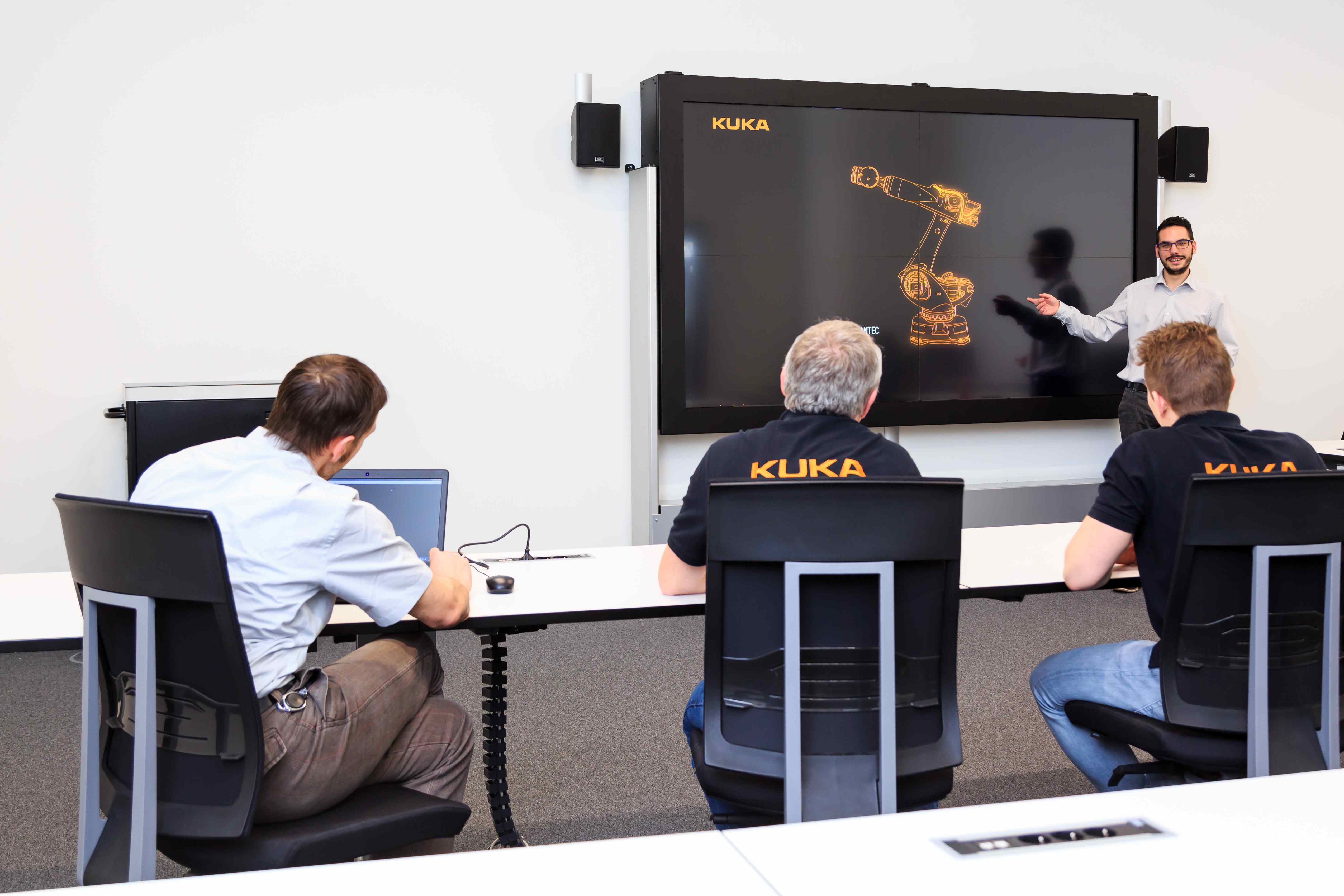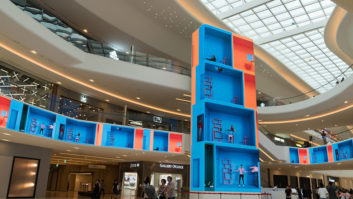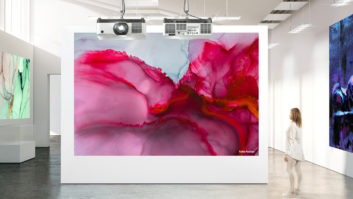
Having previously considered where the display industry as a whole is heading, before looking closely at specific technologies such as HDR and OLED, we conclude by assessing areas of growth, with touch-driven interactivity a key area. Ian McMurray reports
There are innovations coming to market in terms of transparent displays and double-sided displays. “This year at CES, Panasonic showcased a transparent TV,” notes Enrique Robledo, European marketing manager for Panasonic Visual System Solutions. “It can be used as a translucent glass cover and then, using the TV’s remote, users can turn on the ‘screen mode’ and the TV becomes visible. It uses micro LEDs which display the image onto the glass display.”
“As so often,” he goes on, “there is a chance that developments such as this in consumer TVs will filter through into the professional environment. I could see interest in retail for example, an industry that is always looking for innovations to help differentiate its products.”
Niche applications
His response raises an interesting point, however, and that is the extent to which display manufacturers will increasingly target niche applications by developing specific functionalities and feature sets. Obviously, the niche needs to be a financially attractive one – but it could be argued that, by developing easily networkable, resilient, interactive, locally intelligent displays, manufacturers have been instrumental in making digital signage a very sizeable niche indeed.
One technology that has added considerable value to displays in recent years has been the interactivity brought about by touch, and further developments seem likely here.
“Touch-driven interactivity is quickly becoming a key growth area for digital signage and presentation,” adds Thomas Issa, product manager at Sony Professional. “According to Futuresource, sales of interactive flatpanel solutions in Europe more than doubled between 2014 and 2015. This trend is expected to continue.”
NEC certainly sees the opportunity. “At ISE, we showcased mirrored displays, screens with protective glass, interactive videowall screens and touchtables,” says Thomas Walter, section manager, strategic product marketing at NEC Display Solutions Europe. “It shows that there’s a high demand for special applications. Even if these are niche markets, these display solutions allow unique applications and empower the user to create unusual but highly value-added solutions.”
Recurring in any discussion of display technologies is the subject of lower power consumption and the advantage that LED and OLED appear to have in this area. LED-backlit LCD displays certainly offer superior performance in this regard than their CCFL-illuminated predecessors.
Exciting developments
“I think the most exciting developments have been the advancements in more energy-conscious flatpanel display technologies – such as LED and OLED,” believes Steve Scorse, vice president, EMEA at SiliconCore. “LED displays are now not only competitive with more traditional LCD displays with their image quality, but they also offer low power consumption and heat output, making them attractive in terms of sustainability and energy use for companies.”
Although not a flatpanel display, evidence of this sensitivity to the need to reduce power consumption can be found in Barco’s new Flagship Laser Display for 24/7 control rooms. Its use of RGB lasers rather than laser phosphor is said to enable it to consume 50% less power than would be the case for LED-based rear projection displays.
At the end of the day, if developments in displays are to benefit the AV industry, they need to bring new benefits and new applications. Inevitably, proven markets such as digital signage seem likely to gain the most.
“The retail sector is one industry that frequently benefits from using the latest advancements in display technology to attract shoppers,” says Issa. “By being able to deliver bright, clear images even in busy light environments such as the high street, retailers are able to engage and retain the interest of potential consumers through the use of the latest display technology.”
Walter agrees: “As the retail sector is the biggest contributor to display usage, many features like centralised display control and monitoring will see huge benefit. In addition, context-aware signage experiences will greatly influence the digital signage market.
“We can see that interactive display usage is getting more popular as it allows multi-user inputs and collaborative working in education and corporate offices,” he continues. “And: display technology is becoming an incremental element of architectural design. Displays are becoming digital surfaces and are considered to be part of a building or venue, such as in airports, museums or stations.”
Retail leads
“Retail has always been the leader in the display technology market, and I think it will become an interesting place to test and deploy the latest developments,” adds Scorse. “LED in retail in particular is becoming quite commonplace due to its low power consumption and complete flexibility, so with the rise of ultra-fine pixel pitch displays, this is set to experience great growth. The attractions industry has a lot of exciting potential for future displays. “
“Developments in display technology are also benefitting the medical industry,” explains Issa. “4K displays offer surgeons greater detail and colour reproduction than their predecessors. This is proving invaluable in microscopic operations and keyhole surgery in particular.”
He also notes that flatpanel displays accounted for over two-thirds of interactive display sales in the UK’s education market in 2015, compared with less than 20% in 2013.
“The markets and applications to benefit the most from developments in display technologies will undoubtedly be the ones which attach the highest value to them – think about critical infrastructure control rooms, meeting rooms, public signage, cinemas and so on,” summarises Suchit Rout, director – global strategic alliances and business development at Barco.
“It’s not just about technology. It goes much deeper than that. For any given installation, issues such as human factors, relevant content, affordability, lifetime, total cost of ownership will have equal significance. It’s pretty much the case that any display technology can readily substitute for another – but each different application will require specific display characteristics that will determine the appropriate display technology. Your chosen technology provider should be able to act as an advisor rather than just a vendor.”
Market expansion
The big question for the pro-AV industry, of course, is whether improvements in display technology will expand the market – creating more opportunities for displays, and thus more business? The answer, inevitably, is no – and yes. The displays industry has already reached a point that is far past ‘good enough’ for the majority of applications, and improvements are largely incremental in terms of connectivity, maintainability, installability and so on. It’s hard to see how current developments in displays can easily create new markets – and even more radical departures such as rollable screens seem unlikely to be game-changers.
On the other hand, anything that creates greater customer satisfaction through improved image quality, superior ease of use, lower cost of ownership and the like can only encourage the wider deployment of displays in applications such as digital signage, education, corporate meeting rooms, visitor attractions and other markets in which screens are already well entrenched.
Continued proliferation in the number of pixels in the universe seems assured.






